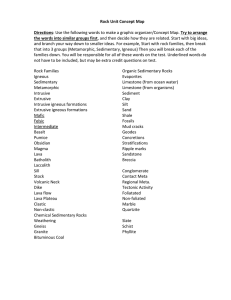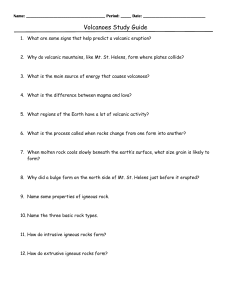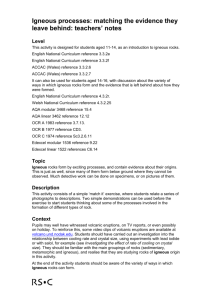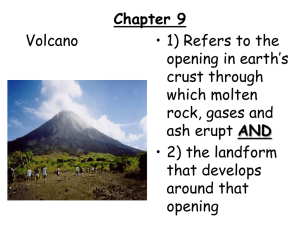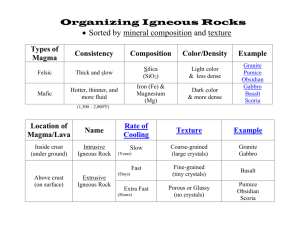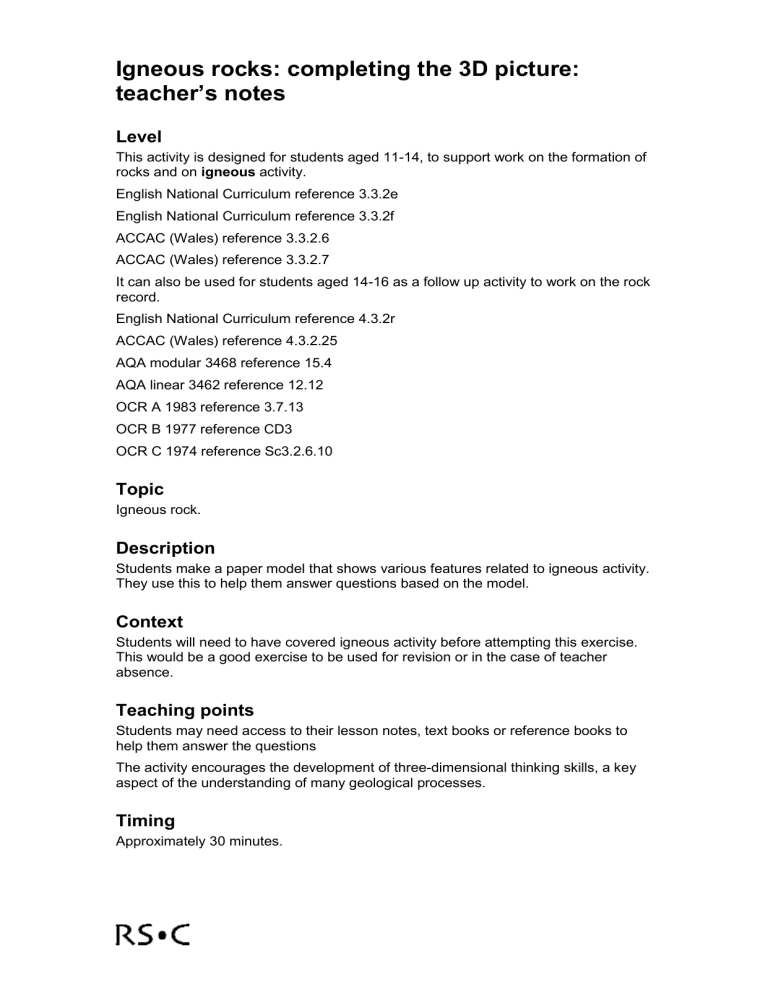
Igneous rocks: completing the 3D picture: teacher’s notes Level This activity is designed for students aged 11-14, to support work on the formation of rocks and on igneous activity. English National Curriculum reference 3.3.2e English National Curriculum reference 3.3.2f ACCAC (Wales) reference 3.3.2.6 ACCAC (Wales) reference 3.3.2.7 It can also be used for students aged 14-16 as a follow up activity to work on the rock record. English National Curriculum reference 4.3.2r ACCAC (Wales) reference 4.3.2.25 AQA modular 3468 reference 15.4 AQA linear 3462 reference 12.12 OCR A 1983 reference 3.7.13 OCR B 1977 reference CD3 OCR C 1974 reference Sc3.2.6.10 Topic Igneous rock. Description Students make a paper model that shows various features related to igneous activity. They use this to help them answer questions based on the model. Context Students will need to have covered igneous activity before attempting this exercise. This would be a good exercise to be used for revision or in the case of teacher absence. Teaching points Students may need access to their lesson notes, text books or reference books to help them answer the questions The activity encourages the development of three-dimensional thinking skills, a key aspect of the understanding of many geological processes. Timing Approximately 30 minutes. The exercise Apparatus Each student will need A copy of the worksheet The igneous activity model. Scissors Glue or paste Answers to questions Q 1. On the east side, the batholith should be completed as a huge structure, getting bigger with depth. A volcano feeder pipe should be added. On the north side, the vertical dyke feeding the sheet lava flow should be added. A vertical dyke feeding the sill may or may not be present too. On the West side, the base of the lava flows should be shown. See also Figure 1. Q 3. (a) the batholith would have cooled most slowly, and so would have the largest crystals; (b) the sheet lava flow (or lavas in the volcano) would have the smallest crystal size, having cooled very quickly; (c) an igneous rock with medium-sized crystals could be found in the sill, in the dykes or in the volcano feeder pipe. (d) ash layers might be found between lava layers in the volcano. Q 4. (a) the batholith might be made of the dark, iron / magnesium-rich rock gabbro (it might also be made of the pale, silica-rich rock, granite); (b) the sill, dykes and volcano feeder pipe might be made of dark, iron / magnesium-rich dolerite (or of pale silica-rich microgranite); (c) the lava flows might be made of basalt (silica-rich magmas rarely flow to the surface as they are very viscous; they form explosive volcanoes instead, resulting in catastrophic eruptions producing thick ash layers). Figure 1 Answers

